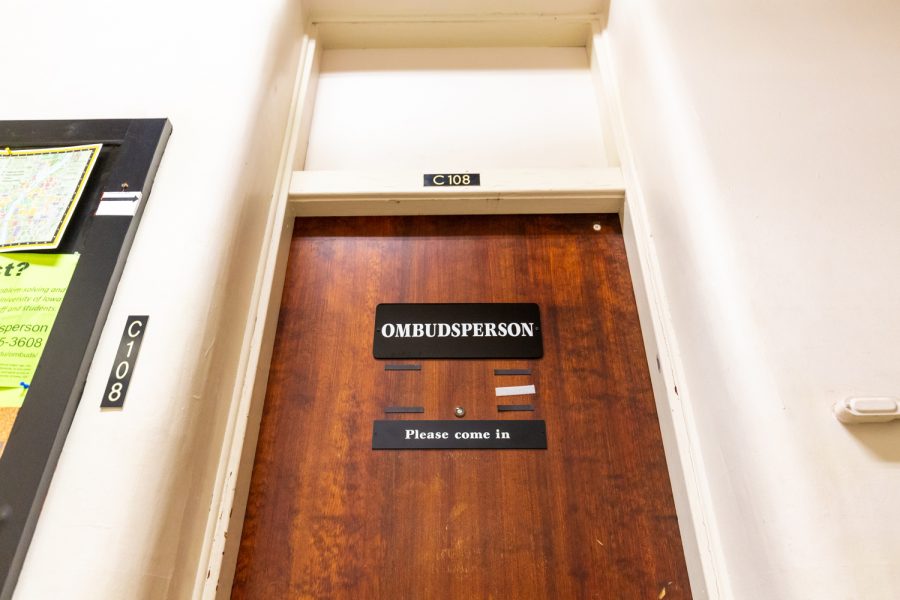Ombudsperson office released annual report on demographics of people seeking help
The Office of the Ombudspersons released their annual report this week. The office seeks to provide problem solving and conflict management on campus.
The University of Iowa’s Ombudsperson’s Office in Seashore Hall on Monday, Sept. 17, 2018.
September 17, 2018
Since 1985, the University of Iowa Ombudsperson Office has been an informal, confidential resource for solving problems and providing conflict management.
The ombudspersons provide mediation, education, information, advice, and empathetic listening for students, staff, and faculty going through a wide range of problems and conflicts.
“Any student, staff, or faculty member can come to us with a problem, question, or concern,” Ombudsperson Cynthia Joyce said. “We listen to them, we help them understand all their options, we gather information for them, and we help them figure out what their plan of action is going to be.”
The office released its annual report this week, available on its webpage, which reveals various demographics and information about the people who turn to it. The office will spend the fall discussing the report, related issues, and its role on campus with organizations such as the UI Student Government, Graduate/Professional Student Senate, and Faculty Senate.
The report detailed a variety of reasons people use the office for help; half seek it out because of issues with hierarchical relationships. This could be the result of problems with supervisors, professors, TAs, or department heads, Joyce said.
Problems with peers, difficulty progressing academically or professionally, and violation of policy were the next three most prevalent issues.
RELATED: Traffic jumps for University of Iowa ombudsperson
“Our office deals with all kinds of issues from roommate issues to leasing issues,” Ombudsperson Rachel Williams said. “Sometimes, we help students who are having difficulties working with a professor or TA. Sometimes, students don’t work well with each other for a group project. We help faculty navigate difficult points in their careers.”
The report found that the people seeking help last year were 51 percent staff, 25 percent students, 17 percent faculty, and 7 percent others, which could include community members and patients at the UI Hospitals & Clinics.
Additionally, 69 percent were women and 23 percent were racial or ethnic minorities.
“In a way, our office is sort of a barometer for the university to see if people are feeling pressed or not feeling pressed,” Williams said.
One of the focuses of the report this year is abrasive behavior, which includes bullying and perceived disrespect in peers, supervisors, and students, among other complaints, she said.
According to the report, 9 percent of those seeking help last year had concerns related to abrasive behavior.
“This tells our campus that’s something we need to think about,” Williams said. “How can we work better with each other in these ways?”
In response to the issues, the ombudspersons try to find a plan of action. Joyce and Williams said they often make phone calls to various parties in order to mediate solutions. They present information and connect people with resources to solve the problems.
As an informal, confidential resource, the ombudspersons never disclose information to the university or get involved in formal complaints, unless someone is at risk of harm.
However, Joyce said, she worries that undergraduates aren’t always aware of the office as a resource. She hopes more undergraduates will consider the office when they are in need.
“This is a very welcoming office, and the problems that the office hears about and tries to help with range from the really trivial to the really serious,” former ombudsperson and UI law Clinical Professor Lois Cox said. “It’s an office for everyone.”






